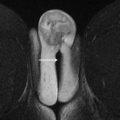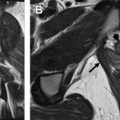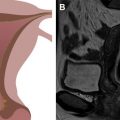Magnetic resonance–based image-guided adaptive brachytherapy is gaining popularity in the United States in the setting of gynecologic malignancies. This technique improves local control, increases overall survival, and minimizes toxicity to the adjacent organs at risk. The purpose of this article is to familiarize radiologists with image-guided adaptive brachytherapy by describing its history, detailing MR imaging techniques, describing treatment considerations, and reviewing image interpretation.
Key points
- •
There are 2 main classes of brachytherapy applicators: intracavitary and interstitial.
- •
Image-guided adaptive brachytherapy (IGABT) improves local control, increases overall survival, and minimizes toxicity to the adjacent organs at risk (OARs).
- •
After external beam radiation, the cervical tumor often becomes much smaller, more heterogenous, and more irregular in configuration.
Stay updated, free articles. Join our Telegram channel

Full access? Get Clinical Tree






